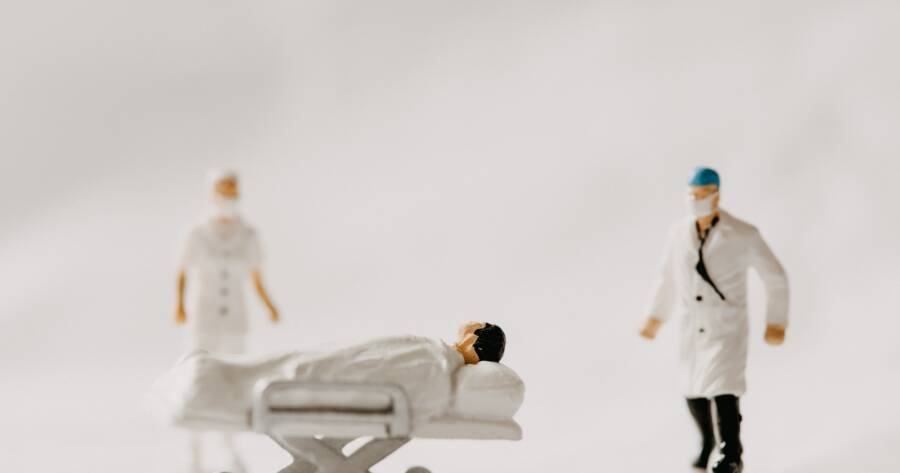Medical malpractice occurs when a healthcare professional’s actions fall below accepted standards, causing harm to a patient. Understanding common types can help individuals recognize when a preventable error may have contributed to an injury or worsening condition. Issues can arise in diagnosis, treatment, medication management, surgical procedures, or follow-up care. Awareness of how mistakes occur empowers patients to seek appropriate guidance, protect their well-being, and make informed decisions about potential legal options and future medical choices.
What is Medical Malpractice?
One of the tenets governing physicians is the concept of “do no harm.” Unfortunately, thousands of patients are harmed each year at the hands of their physicians and other healthcare providers that are duty-bound to keep them safe.
The concept of medical malpractice is not a new one. As far back as 2030 BC, the Code of Hammurabi recognized the need to hold doctors accountable for the treatment rendered to patients. Today, medical malpractice is defined as a deviation of the standard of care in the treatment of a patient.
Here are several types of medical malpractice that can land doctors, nurses and others in court.
Diagnostic Errors
Statistics show that the most common sources of claims of medical malpractice from 2013 through 2017 were diagnostic errors. Failure to diagnose, misdiagnoses and delayed diagnoses are all diagnostic errors that crop up way too often. This sometimes plays out as doctors missing the signs of one condition, blaming symptoms on another condition or ignoring the symptoms altogether, only to lose valuable treatment time and lessen the efficacy of any future treatment plan. In other cases, doctors may begin treatment for a condition that does not exist, doing harm to the patient in the process. For example, a doctor orders a patient to undergo radiation or chemotherapy to treat a benign tumor.
Surgical Errors
The most frequently sued medical professional is the surgeon, and surgical errors are a common source for medical malpractice claims, according to the American Medical Association. In fact, approximately 50% of all general surgeons have faced two or more medical malpractice claims over the course of their careers. Leaving an instrument or surgical sponge in the body, puncturing an internal organ and other types of negligence are most often cited. Surgeons may also be sued when mistakes are made after surgery, such as when a surgeon fails to provide adequate post-op care.
Medication Errors
Medication errors take the lives of up to 9,000 people in the United States each year, according to the National Center for Biotechnology Information. These deadly errors can happen at various points of contact with the patient, from prescribing to documenting, transcription of doctor’s notes, administration and medication monitoring. Often, the wrong dose is prescribed or prepared, dosing is improper, an unauthorized drug is prescribed or the drug is given to the wrong patient. Failure to document drug allergies, rule out potential drug interactions and monitor a patient’s liver and kidney function while on particular medications are also common medication errors leading to malpractice claims.
Anesthesia Errors
It is scary enough to be “put to sleep,” but knowing that a mistake in anesthesia procedures can result in medical malpractice makes the notion even more worrisome. Although they are not as commonplace as surgical errors, errors in administering anesthesia can have serious consequences, as even a minor error can lead to brain damage, permanent injury and even death.
Some medical malpractice claims resulting from anesthesia occur when the anesthesiologist or other responsible provider uses excessive anesthesia, fails to complete an adequate patient history to rule out potential problems, neglects the monitoring of vital signs during the procedure, and fails to inform patients of preoperative requirements such as not eating prior to the procedure.
Infection
Patients becoming infected with dangerous pathogens while in the hospital or clinical setting is another source of medical malpractice claims. The methicillin-resistant superbug Staphylococcus aureus, for example, is a heavy hitter when it comes to hospital infections, yet only about 17% of health care workers regularly keep non-infected patients in the loop about the risk of this type of infection during their stay, notes one study.
Informed Consent
One of the more common claims of medical malpractice revolves around informed consent. It is imperative that patients fully understand the risks involved in every procedure or surgery. Doctors, in turn, must be willing and capable of providing a clear picture of the procedure so that the patient can make a decision that’s smart and informed and, most of all, falls in line with their wishes. Consent is not enough. Doctors must fully believe that the patient understands what they are consenting to or the doctor may face a medical malpractice lawsuit down the road.
Birth Injuries
Injuries during pregnancy and birth can lead to lifelong issues for the baby, including cerebral palsy, paralysis and seizure disorders. Because of this, OB/GYNs are second only to surgeons in the number of malpractice claims lodged against them each year. Injuries are sometimes traced back to care during pregnancy, including failure by the OB/GYN to diagnose a condition like gestational diabetes, HIV, preeclampsia or lupus that can hurt the baby prior to birth.
Some injuries occur because of complications related to the size of the baby, including failure to perform a Cesarean section delivery despite the baby’s size. Improper use of a vacuum extractor or forceps can also injure the baby during birth and lead to a medical malpractice suit.
Holding Physicians Accountable
Under the aforementioned Code of Hammurabi, a physician that caused the death of a patient was punished severely, having his hands lopped off at the wrists. In today’s less barbaric world, steep penalties and settlements are sought instead, and in some cases, a physician or medical worker can be held criminally liable for negative outcomes of treatments and surgeries.
A seasoned lawyer with a history of handling medical malpractice cases can help injured patients and their families understand the rights they have and determine who, if anyone, should be brought to task for a medical error or other act of negligence that amounts to medical malpractice. In some instances, one injury may be the fault of multiple people and entities, such as a doctor, nurse and the hospital itself.






